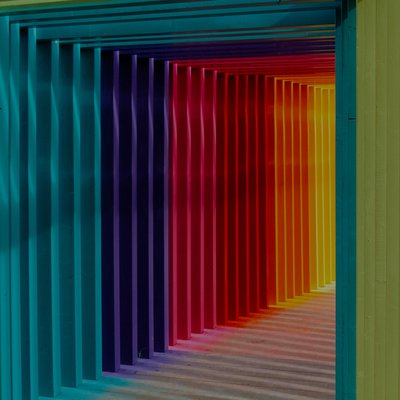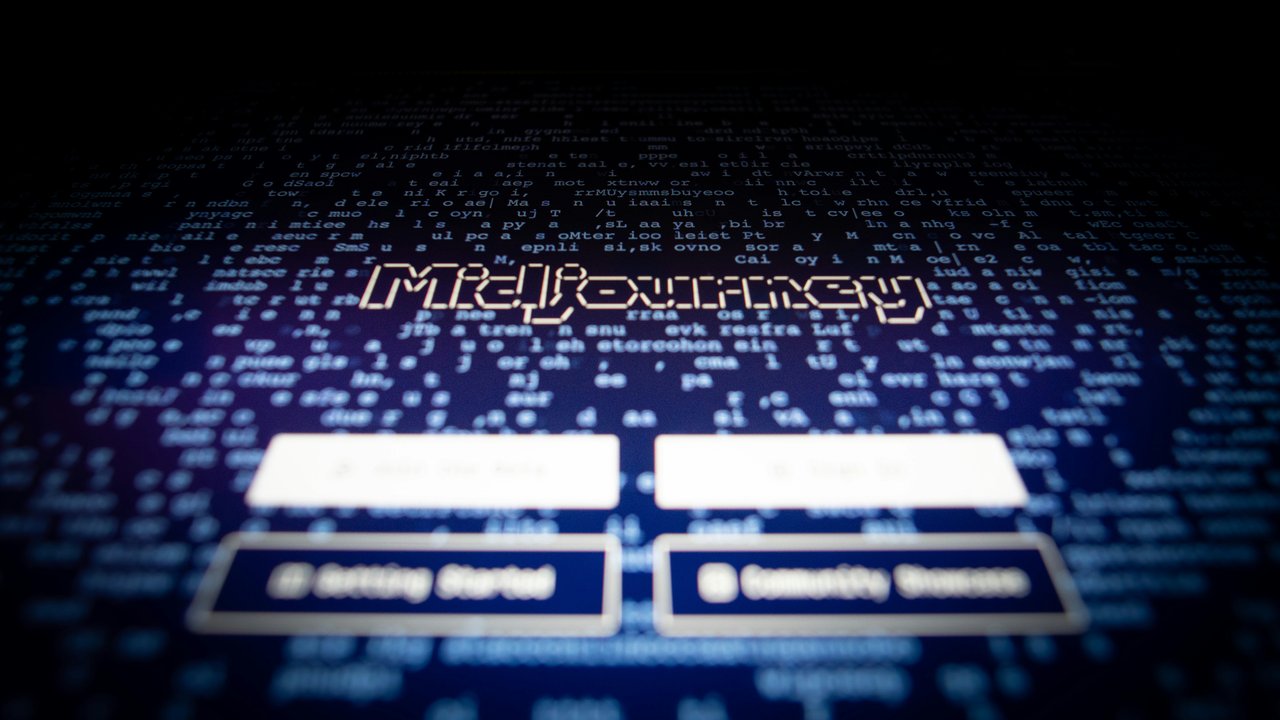How colour influences the way consumers think and buy

In the design process, choosing a colour is more than just picking ones you like or choosing a coup…

From personal projects to major campaigns, the artistic capabilities of artificial intelligence are being explored and expanded all the time. It's often viewed as something that will replace human talent, but is that actually true? In this piece, we look at how we can work together with AI, what its limitations are, and why it's not taking over from us any time soon.
You can’t read the news at the moment without seeing another CEO tell the world that AI is going to wipe out jobs, but when it comes to creative thinking, we think it’s a different story. Critical thought is a uniquely human ability - AI might be able to follow prompts to create a ‘painting’ in a matter of seconds, but it does not possess critical thinking, which is key to creativity.
As designers, we’re closest to the tools - whether that’s Photoshop, Illustrator, or AI image generators - so it’s natural to ask: what are the limits of AI?
AI continues to be a huge presence in marketing, with reports of major companies laying off hundreds or thousands of people and attributing the decision to the capabilities of artificial intelligence. There’s no doubt AI excels at certain things, particularly in design workflows:
However, despite its capabilities, there is still plenty of consumer skepticism around AI. Authenticity and trust are key parts of consumer decision making, and artificial intelligence is seen to be lacking the former, which also affects the latter. As trust and authenticity become yet more important, AI may struggle to meet the need for these two factors, which could prevent it from becoming a true force in marketing.
For all its speed, its scalability, and its analytical capabilities, there’s a lot that artificial intelligence can’t do, and a lot of requirements that it can’t currently meet.
Audiences place huge importance on real voices and lived experiences, which is obviously something that AI cannot and will not be able to supply. Brands that use Midjourney, Firefly, or Gemini to create ‘authentic’ artwork are likely to be on the back foot compared to competitors who take the human approach.
As consumers become ever wiser and more adept at spotting AI-generated content, there will be fewer and fewer opportunities for brands to get away with using it under the guise of authentic, human-made creative. Brands will either have to admit to using AI - the opposite of the real voices and experiences that customers value so much - or try and hide it, which defeats the purpose in the first place.
The days of fully autonomous AI are some way off, which means that any content generated by artificial intelligence still must be overseen, reviewed, and approved by a human. For as long as this is the case, the human mind will still be the crucial cog in creativity.
The world of generative AI is currently at a ‘Wild West’ stage. There are countless different generative programs/bots out there, all claiming to be the best at what they do. Some are even still in beta or even alpha stages (developmental stages) whilst being commercialised. It’s fair to say that there is an immense thirst for producing generative AI tech.
From the perspective of a creative, this means that there’s a lot of choice and capability, which is amazing, but it also means that you have to do a lot of research, sifting and testing before committing to choosing the right generative AI service for your brief. It’s certainly a process for an inquisitive mind. As time goes by, we’ll see the choices narrowing, on account of the most successful and best quality AI prevailing in some way or another. But right now, amongst the AI platforms, it’s every bot for itself and we as humans are here to find the good ones and nurture what they can produce with human insight and finesse.

While it’s impressive that AI can create sharp visuals at the drop of a hat, there’s an undeniable truth to the content: it all feels pretty samey, most of the time.
See enough AI-generated imagery and you’ll start to notice the telltale signs and characteristics that each piece shares, from the well-known issues with hands, jumbled or illegible text, strange lighting and faces, and layouts and styles that feel formulaic.
These signs, which become so obvious when you know what you’re looking for, will immediately reveal to viewers that the artwork they’re consuming is AI-generated, and therefore cheapen its value and dilute its impact.
Like any new technology, AI is not without its controversies. Copyright issues - many artists and creators have voiced concerns about copyrighted material being used to ‘train’ artificial intelligence - and outright plagiarism have the potential to bring about legal ramifications, for example. Plus, there’s the significant environmental impact of the technology and its data centres, which require huge amounts of energy and water to run.
Brands have to think carefully about these concerns, and how the use of AI aligns or doesn’t align with their values.
AI might be of increasing impact, but we’ve still got the biggest role to play. From oversight, to strategic thinking, to an understanding of nuance and emotion that technology can’t match, let’s take a look at why people will continue to be the key part of the creative process.
Every AI system is trained on unfathomable amounts of data, but it’s never actually thinking about anything, which means it doesn’t take nuance into account. A designer knows when a font pairing feels off, or if an image doesn’t match the tone of a campaign. A trained eye and instincts like these can’t be replicated by AI.
Originality is also a problem for AI. Because it’s trained on existing information and art, when it’s asked to create something, it’s simply scouring that to inform its own. So, us humans are needed to not only supply the originality, but also check AI’s creations for potential plagiarism issues.
The dynamic between humans and AI bots is prevailing along with the technology itself, because we’ve all been gifted the utility of a very powerful and compliant assistant. When assistants are instructed effectively, they will produce effectively - this is where AIs can be applied to strategic creative thinking.
As a creative, if you have a husk of an idea that you think has potential, ChatGPT, Claude or Google Gemini etc. can be your helpful collaborator to form that human spark into a rounded creative concept or strategy in what feels like no time at all. It feels like a risk, but ultimately a greater volume of creative fruit is the yield. The yo-yo back and forth between human and AI ultimately results in an elevated level of production.
Avoidance of risk is key. It is becoming much more apparent over time that the more effectively an AI is instructed, the more fruitful are the results. This is a process that relies on a high level of human articulation, eloquence and instruction, similar to briefing another human. It’s this process that identifies collaboration with AI as roundly human-led.
It may feel like a risk, but the more we can control the risk with effective, thorough, well-informed and intelligent instruction, we can achieve better quality creative outputs.
Brand values are the foundation of all marketing content, and it’s humans that spend the time researching and creating these values to best position their brand. So, AI-generated content must be assessed by us to ensure it meets brand values.
We also have a much greater understanding of ethical boundaries - this ties back into the issue of nuance - which is crucial to delivering the right messaging in the right context.
For all the talk of AI replacing people, we think it’s wide of the mark. Instead of seeing AI as a replacement, think of it as a collaborator - there’s things it can do better than us, but when it comes to real creativity, we’re still in charge.
A time-consuming, repetitive task stopping you from concentrating on a big creative project? AI can handle the repetition efficiently, freeing you up to work on more pressing tasks. Things like background clean-up, resizing assets for web, social media, and email, supporting visualisation of ideas ahead of sign off - AI can be deployed for tasks like these, saving time and money.
These smaller yet important tasks are a great way to make use of AI, but ultimately it’s down to the creatives to explain design decisions and creative routes for campaigns and branding.
In short, we see it like this: AI for efficiency and scale, and humans for strategy, creativity, and emotional connection.
It’s undeniable that AI can serve as a very effective support system for creatives, but we don’t think it can ever replace us. For any AI-generated or AI-based creative output to be successful, it has to be grounded in human perspective, human creativity, and human experience. Authenticity is absolutely crucial to any creative work, and authenticity can only come from people.
As we’ve said before at RKH: it’s not humans vs AI, it’s humans working with AI. We can use this incredible technology to play to our own strengths and enhance our own abilities, not replace them entirely.